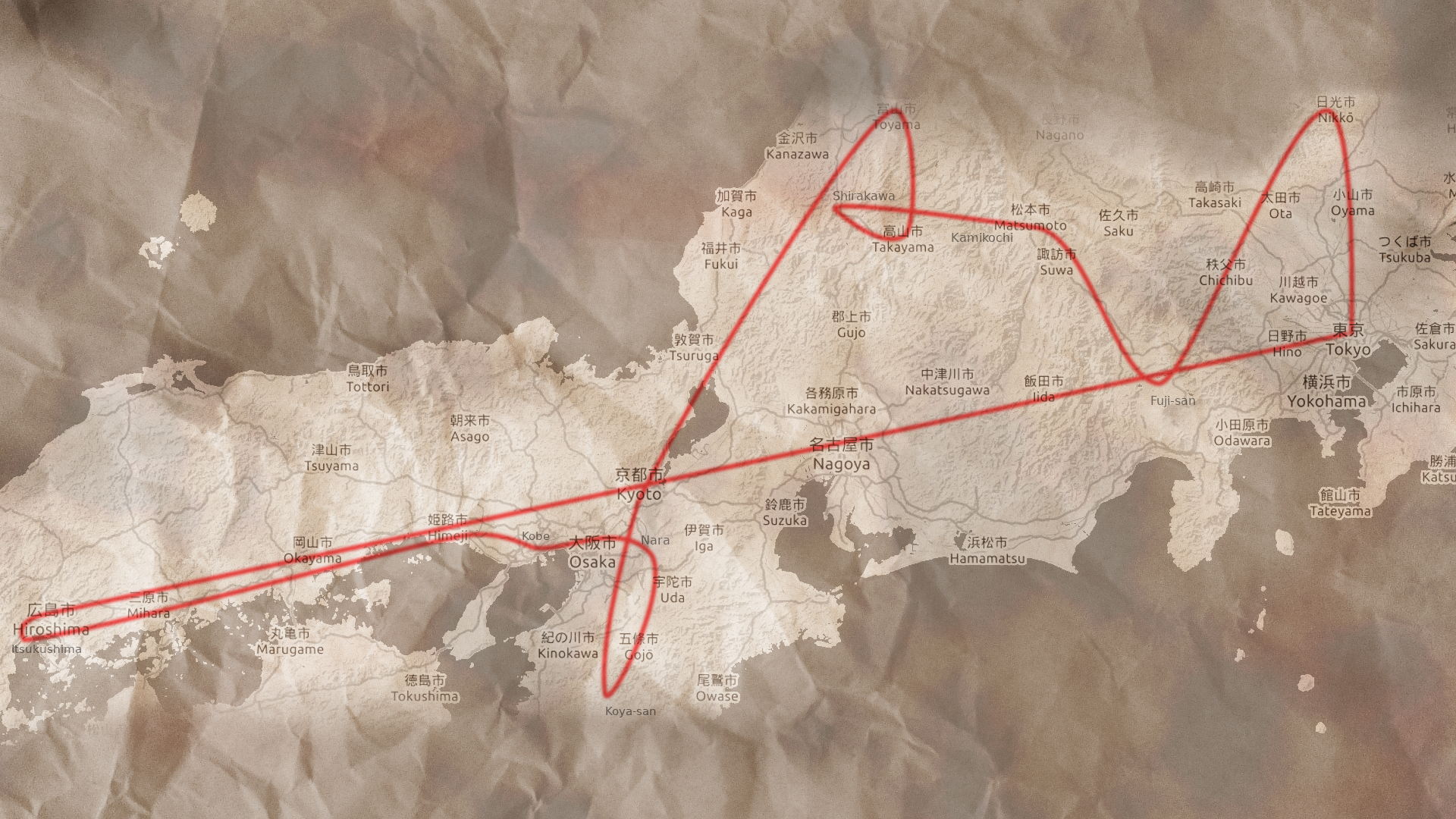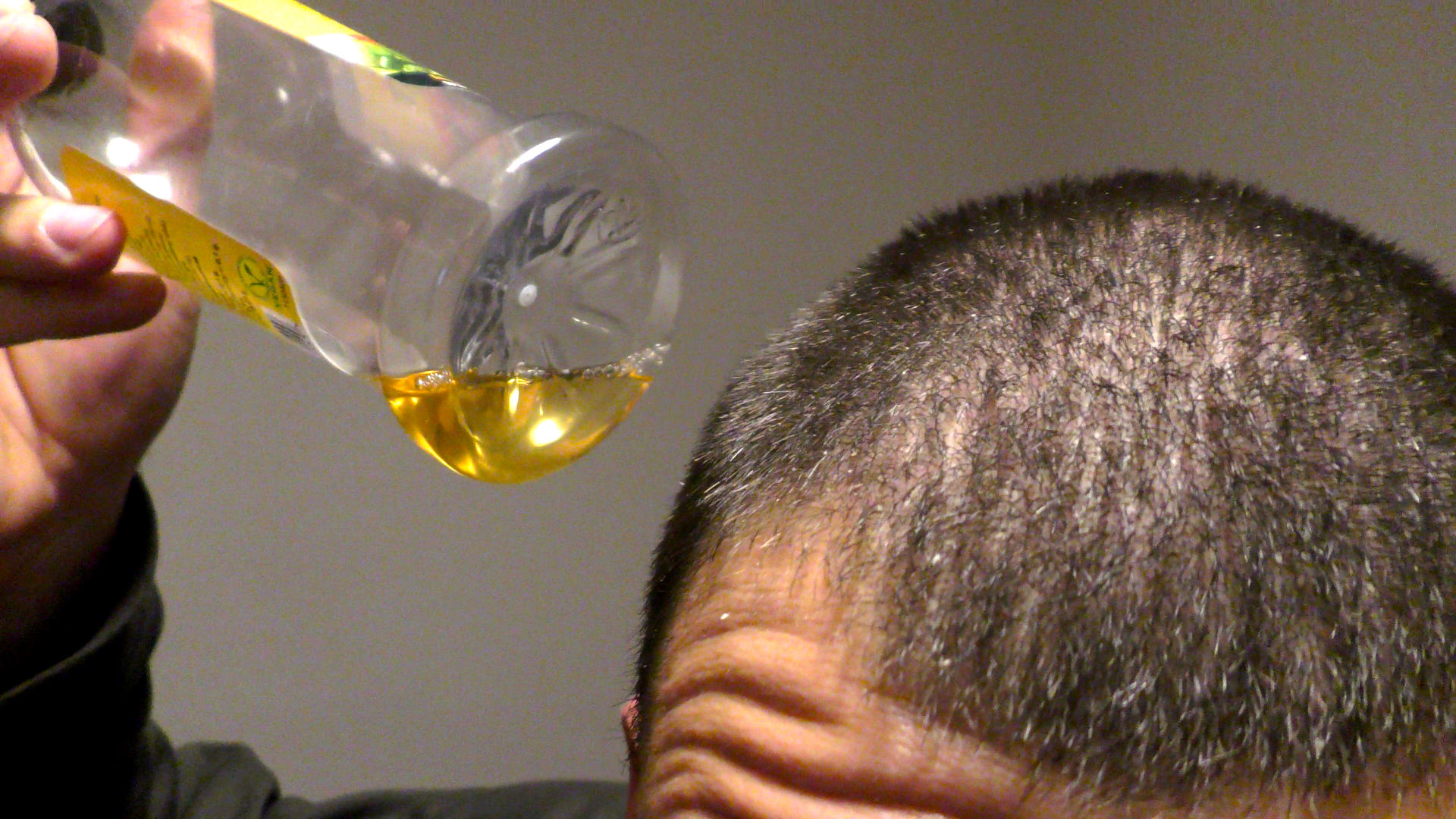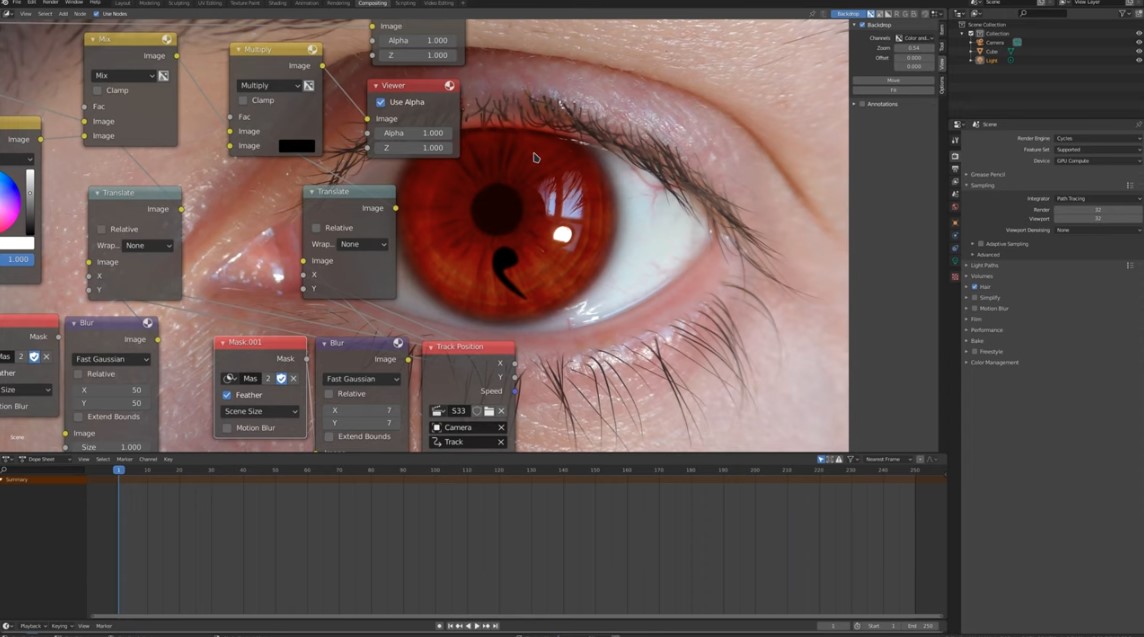Hitchhiking and urban camping in Japan? That is impossible! To most people, Japan is a country of strict rules where such things are unthinkable. Well, me and my friend tried it anyway and it was a huge success and the most incredible experience of my entire life so far. I hope that this article will help someone with his own journey to Japan. I want to share here as much valuable information as I can, everything based solely on what I have learned during this trip. For some further info, leave a comment.
My friend just sent me an email like Man, I am thinking about going to Japan, seeing some famous places, some backpacking. Having one place in a tent, wanna join? At first I was a bit hesitant, it’s too far (13 hours by the plane) and expensive. Visiting Japan has always been my dream since Japanese culture and history is something that plays an important role in my life but I always thought that maybe I’ll go work there or visit it after finishing the school first. However this time I felt like this was a great chance. That was one of those chances, opportunities that can change your life and that can appear only once. I told myself If you don’t go now, you’ll regret it! Just forget everything and go you idiot. And I went…
We visited most of the famous places all over Honshu, the largest island of Japan. We are university students so our budget was pretty limited. Staying in hotels and taking the trains everywhere was out of question. Yet, we really wanted to go to all the places that we knew, that we saw on pictures, in the movies, on the Internet. My friend found some really cheap flight tickets (yea basically he was waiting and checking the Internet every day until a good ones finally appeared) so in the end, the whole trip was four weeks in Japan!

Transportation
We’ve had a lot of time so for example in the cities we took the public transportation like a tram only once. We walked the rest which allowed us to see even some not well known areas where tourists normally wouldn’t go. It was not like something marvelous but I really like to see not only the famous things but also the normal every day’s life of the local people. (Where else would I hear that famous school bell sound that I know from anime and see the cute Japanese girls in school uniforms? :D)
Bus and train
We needed to somehow get to all the places that are unfortunately not really close to each other. Thank God that they were at least on the same island. (more or less, we went to Itsukushima island to see that famous Tori gate in the sea) So for some really long distances, we have pre-ordered night buses which were pretty cheap, We have used the Willer Express Bus Pass for five days which included also the bus that took us from the airport. The Willer night buses were the most comfortable buses I’ve seen. I used to feel quite sick when taking a bus during the night or some longer distances. Here I was tired, a bit dizzy from the acclimatization and plane and had not problem in the bus. The windows are covered by curtains so the lights from the road were not a problem. If that doesn’t help, every seat has a helmet like cover that one can put over his head. Therefore sleeping was not really a problem. (We’ve also had the first seats where was a lot of space for legs. We are both over 190 cm tall which is sometimes a bit of a problem in planes and buses where one has to stay for more that a few hours.) During the night, there were at least four breaks, about 15 minutes on some service areas, where one could go to the toilet, buy something or just take a walk to stretch his legs. There was also an electricity socket and a warm blanket available. The bus does not have a toilet but the drivers informed us that if anyone needed to go to the toilet or was feeling sick, they’d stop at the closest station.
We also took a train once. The price is not high when you don’t travel far and when you don’t take some fast trains like Shinkansen. There are also some train passes provided by different companies which some tourists use.
Hitchhiking
Most of the time we were hitchhiking. One would say that it’s impossible for a foreigner to hitchhike in Japan. Truth is that it was absolutely brilliant! The longest waiting was probably four ours at one service area where people were sending us from one to another across the highway because they were not sure which direction is better for us. Aside from that, we’ve caught a car always in an hour or so. The hitchhiking was so effective that we even saved three extra days. Everything went smoother than we had planned. Plus we saved really a lot of money.
The best way to catch a ride is to have a big paper or a cardboard with the name of the destination in kanji or hiragana. (Some local supermarkets have cardboard boxes at the exits for people to take or one can always ask the staff, did that once and it was no problem. Sometimes they have some at the back of the building outside.) Once we didn’t have it and we were pretty lucky that one Indian guy stopped. He told us that Japanese don’t know the classic thumb up hitchhiking sign. If you don’t believe in your drawing skills, you can always ask some Japanese people to write the location name for you. They are always glad to help.
Important is also to find a good place. (Or at least we thought so. The truth is that when someone wants to stop, he will no matter where you are. Especially Japanese had no problems stopping at the side of a pretty frequented road.) Ideal place is nearby a big parking place or some area where the drivers can easily stop. Great places are the parking lots in front of some stores because people have to slow down there when they want to visit the store and even people who are leaving it can see you. Many people came to us when leaving such store instead of going directly to their cars to see where do we need to go. Also make sure to be visible from distance so that the drivers have some time to read your desired destination. Putting the backpacks nearby is also good so they see you are a tourist and not someone dangerous. Once a police car stopped and they checked our passports. It was just that they wanted to see if we are in Japan legally, they have even recommended us a better place to hitchhike. A less pleasant was when we hitchhiked on a highway, more precisely on a service area (rest areas with some stores an toilets where drivers can take a break). For the entire trip it was not a problem, service areas are the best places where many cars stop and most likely go the direction you need to go (if you get the right side of the highway, if not, you can usually cross a bridge and get to the other side where is another service area). During one of the last rides however, we got stuck on one service area and highway police came to inform us that it’s not allowed to hitchhike along the highway. (We’ve met even some young Japanese hitchhikers on a similar service areas though.) Funny thing is that they gave us a ride after all because we needed to somehow get off the highway anyway :D. Maybe better spot would be right before the toll gates which are at the highway entrances. We were pretty successful there as well many times.
Some people smiled or even laughed when seeing us standing there. It was sometimes a bit discouraging, especially when some drivers even made faces like What? Are you serious?. Important is a patience. Someone always stops. Sometimes even some people from nearby buildings came, brought us a drink or something or came to tell us that we stand on the wrong side of the road. In general everyone who took us in was so kind and helpful. One guy (many thanks to him, he was the nicest Japanese we’ve met) took us 151 kilometers above his original way (Which means he had to go all the way back after he dropped us!!!!) and treated us a meal. We talked a lot about anime and had some similar opinions so he said he’ll take us all the way because it’s fun to talk to us. When I told him that it’s really far and we don’t want to cause him a trouble he told us that he just likes driving (It’s not like I want to help your or anything…baka!).
By hitchhiking we’ve saved so much money, we got to some places even faster than it would be by the train and what is more important to me, we’ve met so many interesting people. We’ve learned so many things that would be impossible to learn without talking to them. For example when we went through Furukawa town, the guy told us Oh by the way, this train station was in Kimi no Na wa anime. or other one treated is a meal where he taught us how to properly eat sushi with Japanese chopsticks. I have asked the people many questions about Japan and honestly these were one of the most interesting moments of the entire trip, the talks with those people and learning something new about this beautiful and unique country. (wouldn’t be possible without basic Japanese skills though) One guy in Subaru Impreza gave us a Tokyo Drift ride from Fuji-san, another one gave us 10 000 yen saying Enjoy a bit more of Japan with this!, two cute girls asked us what we thing about Japanese girls (seriously, I was not sure what is the right answer :D), telling some funny stories in a police car, listening to J-pop songs and rating them, meeting a hitchhiker from a neighbor country of our motherland in a car that stopped for us, those are things one can never forget.

Accommodation
Accommodation is definitely the most expensive thing on a trip to Japan. Not if you sleep in a tent though! Before Tokyo, we’ve had absolutely no problem with camping in cities and towns. We usually found some quiet place in a park or a nearby forest. People in the parks were always so nice even when we told them the truth. (Where do you plan to stay and sleep? Umm, here ^_^”) Some even recommended us some good hidden places. We’ve had a camping gas stove to heat up the water to make some instant soups and ramen. People didn’t mind that either (Of course hiding it behind the bench is not a bad idea. One guy stopped and said But the burner is not allowed! I said Hmm OK. while holding the hot soup in my hands [I don’t know where the hot water came from!]. He smiled after that and said Hide it, hide the burner somewhere!). It’s always good to have the tent hidden in the bushes and trees. During the night it’s usually invisible and when the sun rises it’s time to leave anyway. Even if the tent is visible, when having some bushes around it creates this We don’t want any problems! feeling and people usually don’t care. Only in Tokio we couldn’t find a good place so we’ve placed the tent on one pretty open small dog park. Around midnight a policeman woke us up and told us that we should move somewhere else. We found another place nearby a river. At four o’clock I woke up hearing Konbanwaaaa. Police again! I thought it’s a bad dream. Fortunately they allowed us to stay till the morning. It’s always good to check how the parks you wanna stay look like in advance. After that we’ve spent two nights in a park nearby Tokyo Dome right in the center of the city without any night visitors. The most interesting waking up was probably in Nara. We’ve found a nice place, some kind of a forest. I’ve opened the tent in the morning and at least thirty sacred deer were staring at me. It was creepy as hell! Another good one was in Kyoto. I woke up hearing some Buddhist sutras chanted by a passing pilgrim.

In Japan is a tradition of so called nojuku. Some young people for example sleep outside on a bench, at bus stops or at some quiet places when traveling around Japan or on a pilgrimage. It is acceptable too but when sleeping nearby a building or shrine, it’s good to talk to the owners or local people to somehow let them know.
What is even better is to find a hidden place nearby toilets. Public toilets are everywhere in Japan. And what’s more important, they are all free!!! They are usually clean and nice. The small ones have squad toilets. Most of them offer at least one western style toilet and some bigger ones have even bidet or electronic washlet and the top ones even seat warming. Sometimes there are even spare sockets where you can charge your electronics. Japanese toilets come from heaven!
Food
Normal food is not really expensive. It was more or less the same as in our country. Only some kinds of fruits and vegetables are quite expensive and of course eating at the restaurants. There are shops everywhere, especially small supermarkets FamilyMart, Lawson and 7-Eleven. It’s always worth visiting some bigger ones which are usually cheaper like Aeon Mall, Ogino or famous and probably the cheapest Don Quijote also called Donki where you can find literally everything, not only food. What we bought mostly was bread, instant ramen, onigiri (best thing ever), mochi cakes, canned fish and some other baked goods etc.
Great thing is that water is drinkable everywhere. We were carrying two 2 liters bottles each and refilled them when reaching a toilet or a public drinking water tap. I usually filled only one bottle because the sources were really everywhere in the cities. Once we had to ask for a water at a nearby house. It was a joinery place or something and it was no problem at all. So if you don’t mind tap water, you’re safe in Japan. There are also vending machines everywhere with drinks (usually 100-150 yen for a small bottle or soda).
Culture
Being humble and polite opens the door to Japan! Being or at least trying to be polite is the most important thing! Japanese really appreciate when someone is trying to adapt and accepts their rules. Bow! Bow at every opportunity. Shop assistants bow when you finish the shopping, bus driver bows when you leave the bus, worker at the construction bows and shows you the safe way around the site. Just bow and smile! Also knowing at least some basic Japanese phrases is really important. Just greeting someone in Japanese makes the local people really happy. Saying thank you at every occasion, saying goodbye, all that helped us a lot. There was one old guy passing by when we were sitting on a bench. We said Konnichiwa! (Hello!). He just mumbled something and walked away. Looked kinda grumpy. In a five minutes he returned with two coffee cans for us.
Japanese people are without any mistake the nicest and kindest people I know. When we were tired of waiting for a car once, it was getting dark, we called it a day, found a bench and were about to eat and then find a place to sleep a guy came to us. He asked if we need anything and then agreed to take us closer to the place we needed to go. He also bought us a dinner and when I asked him why did he even came to us sitting on the bench he just answered You looked like you needed a help.. One guy told us that Japanese parents always try to teach children to have a good heart and to be kind. Helping a fellow student or a lower grade student with learning is nothing special while in our country people take money for such things. When I told some people who helped us that we don’t know how to thank them the just told us to repay them by doing the same if we ever see someone who needs help like we did.

There are some interesting things that I have learned there. Blowing one’s nose in public is not polite while slurping and making sounds while eating is OK. (even belching is normal) Leaving a tip in a restaurant is not normal and might offend the waiter. Japanese people have a strong connection to their country or organization or a company where they work. When I for example said I like Japan, they always thanked me like as if I said a compliment directly to them. They were really happy to hear that we like their culture. Apologizing and showing thanks are the most important expressions! Talking loudly in bus or train is considered rude.
Some people might also expect that Japan is full of anime posters and references. That is definitely not true! Only some special shops are like that and sometimes you might find a manga in supermarkets. What you find everywhere are shinto shrines (Seriously, learn how to pray there. You’ll shock Japanese people by doing that without any mistake. A quick guide: wash your hands at the entrance, take the basing with water, left hand, right hand, mouth [with left hand], left hand, basin itself, then go to the shrine, throw yen, bow twice, clap your hands twice, pray, bow once) and Buddhist temples.

If you are interested, I have made a standalone article about the most useful Japanese phrases that I used during this trip. Click here to take a look at it. Or check out a list of my favorite places in Japan. Also an article about travel tips is available here.
I would also like to provide two links to Japanese blog. The author of that blog is a man who gave us a lift to Koya-san. Here are two posts where he describes this situation from his point of view:
Post 1 – right after he picked us up
Post 2 – after I have sent him an email when we got home
And here are some videos from our journey:



